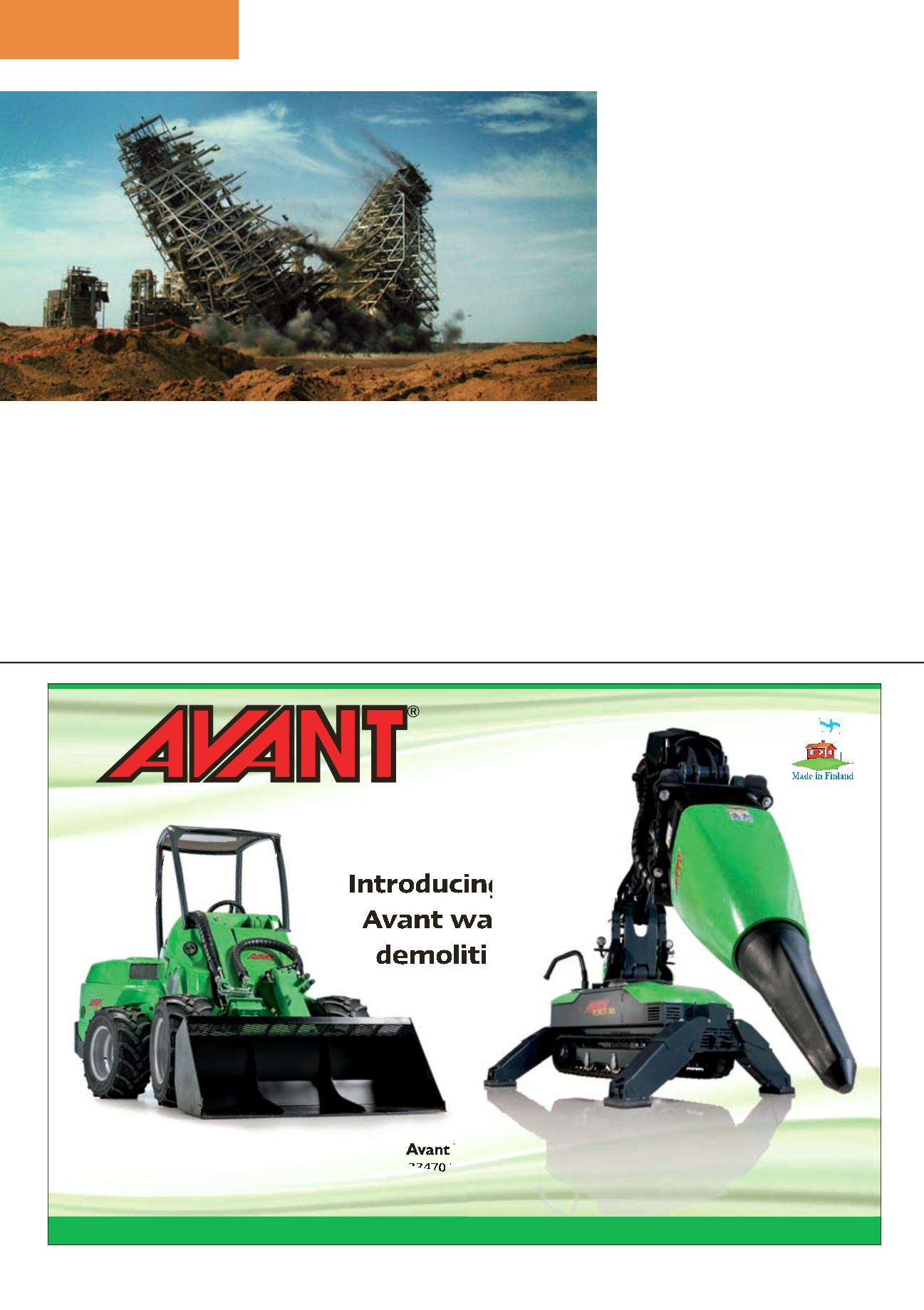
32
SITE REPORT
NOVEMBER-DECEMBER
d
&
ri
The reactor structure,
the largest on the
site, was felled by
pre-weakening and
the subsequent use of
explosive charges
120 tonne excavators to pull those structures
apart, and together with the smaller fleet
excavators equipped with shear attachments,
systematically demolish and process the
materials.
Only one structure remained to be
demolished. However, it was the largest,
most technically difficult part of the entire
operation, and potentially the riskiest at 100 m
high. Due to the sheer height and mass of the
reactor structure, typical cut and pull methods
could not be used. Cutting and kicking charges
would be required to induce the collapse. The
Liberty Industrial team split this structure in
half, collapsing each half away from the other.
The oxy-cutting team could only carry out a
small amount of pre-weakening on the steel
columns.
The final cuts to induce the collapse were
completed using linear cutting charges of
various sizes and power gel kicking charges.
These charges, when initiated, severed the
columns and kicked them clear, allowing
each half of the structure to rotate on its back
columns away from each other. In addition,
the Reactor Building offered another massive
challenge to the team in that the structure
had 16 reactor vessels within the building,
each weighing approximately 300 tonnes. In
the reactors, there were still large amounts of
highly volatile DRI material. The methodology
employed was to split the reactor vessels in
half – so that when they came down with the
structure, the reactors opened up and allowed
the DRI to oxidise, helping to minimise the
risk of DRI during the downsizing operation.
When the Reactor Building was on the ground,
it was left untouched for 24 hours to allow any
hydrogen gases to safely clear the structure.
WASTE MINIMISATION
As part of Liberty Industrial’s on-going
commitment to efficient waste management
and environmental stewardship, all scrap steel
was processed in accordance with strict export
guidelines. This ensured that 100% of the scrap
steel could be recycled for future re-use. All
concrete was retained on-site and pulverised to
downsize and remove the reinforcing, enabling
the resulting product to be used on the future
redevelopment works. Due to this effort, 95%
of the waste generated by the deconstruction
of the HBI plant was recycled. The HBI closure
project is the first to be undertaken as part
of a multi-billion dollar expansion project.
Upon completion of the demolition works,
construction activities will commence on the
land once occupied by the huge structures at
HBI. After 12 months and 100,000 man-hours,
and with no lost-time injuries, the HBI project
was successfully completed by the Liberty
Industrial team.
■
Made
in Finland
Avant Tecno Oy
Ylotie 1, 33470 YLOJARVI, FINLAND
Tel. +358 3 347 8800 Fax +358 3 348 5511
Introducing the
Avant way of
demolition.
DEMOLITION


